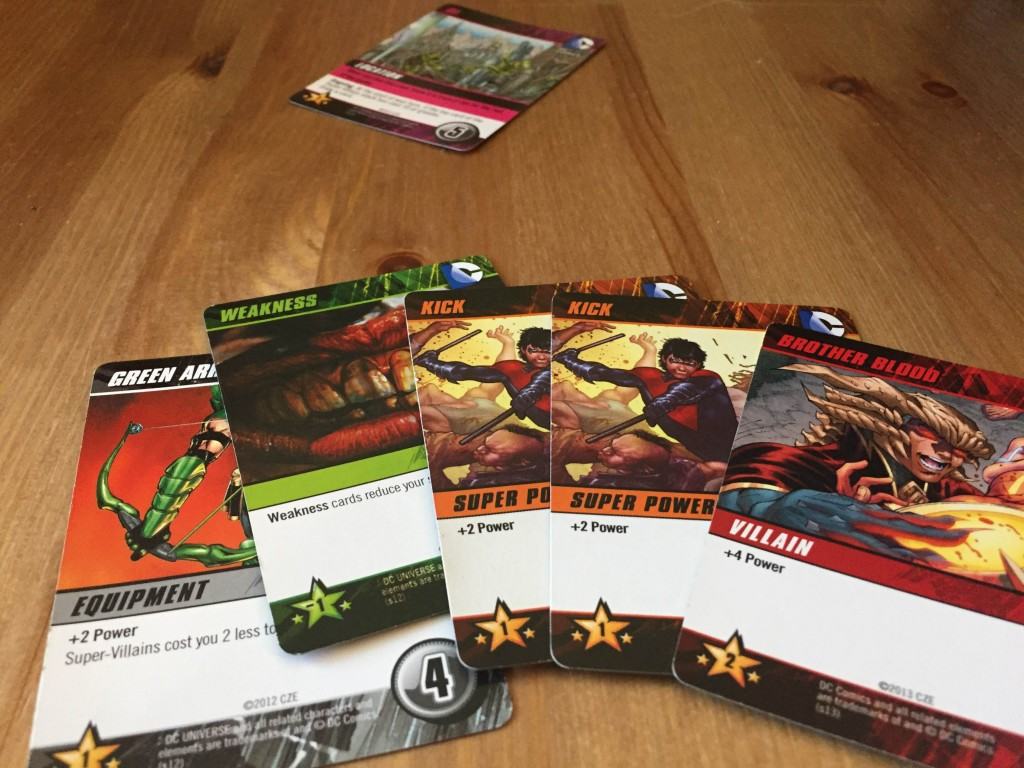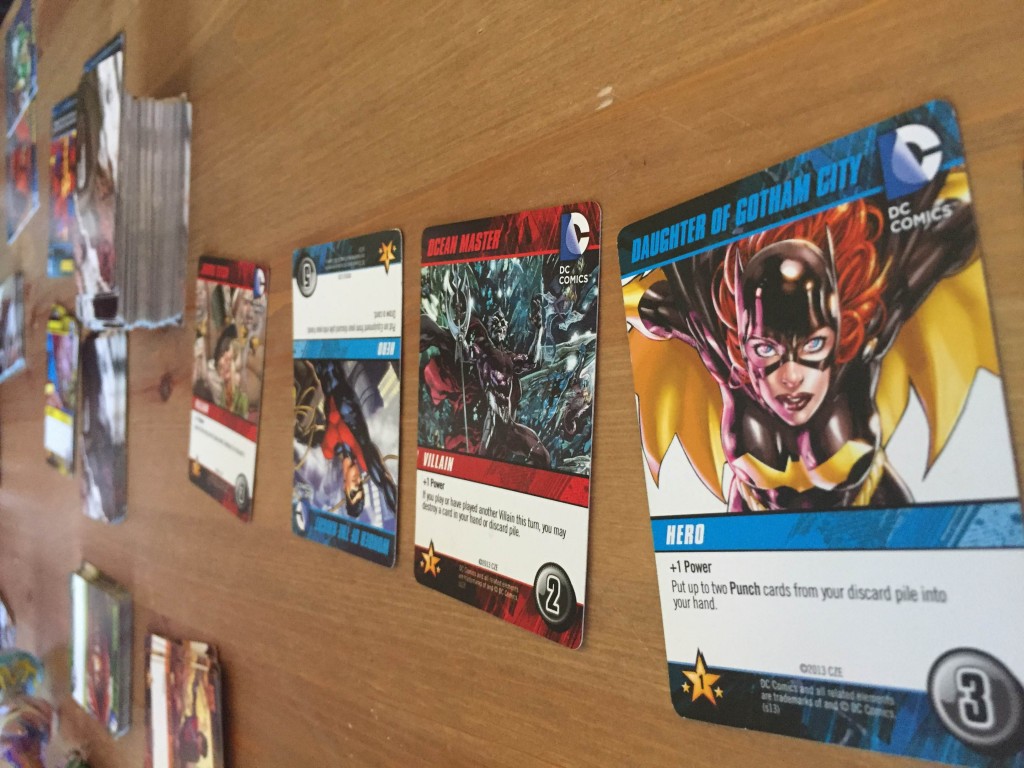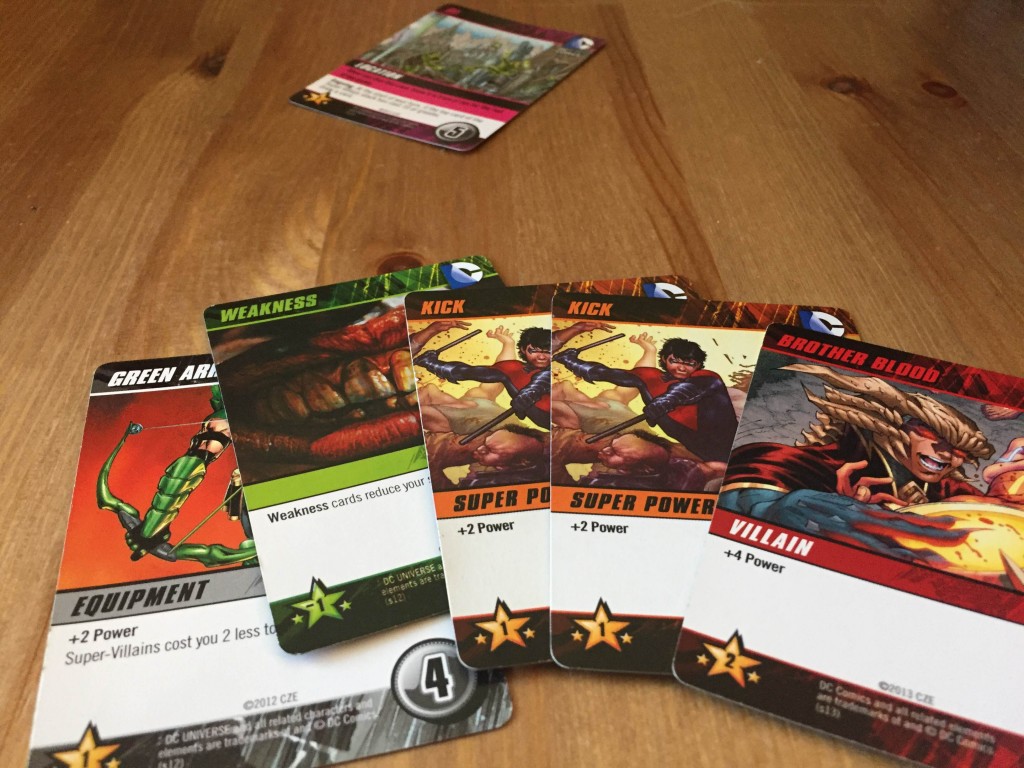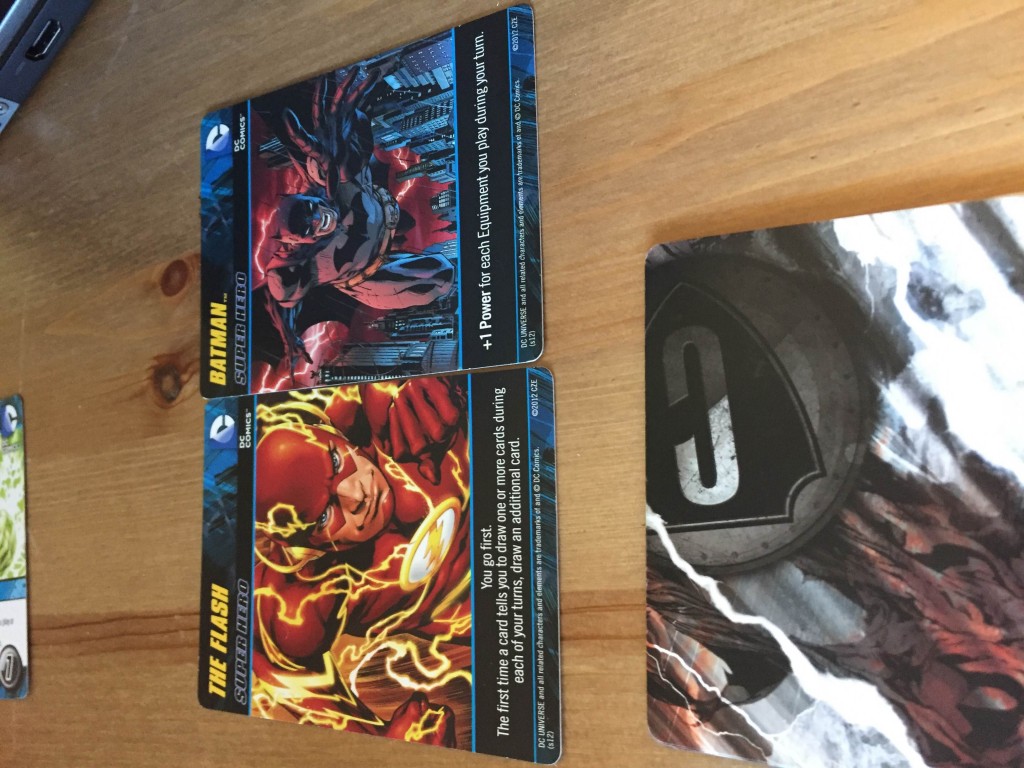DC Deck Building brings together all the heroes and villains of the DC Comics universe to create a Dominion-like deck building experience. From Green Lantern and Wonder Woman, to the more obscure villains of Gotham, Cryptozoic Entertainment has put together virtually the entire cast of DC characters. But does the game have the depth of gameplay as it does hero roster?
… probably not.
Gameplay Breakdown
At the beginning of the game, players will select one hero card that will have one passive ability to be utilized for the rest of the game. The hero card abilities usually fit the hero’s background in a vague way. Superman can add tons of raw power gain, Batman uses lots of equipment, etc.
Players are first dealt ten cards to start the game, none of which is worth more than one power. Power will be the game’s currency, what allows you to purchase cards from the lineup and defeat Super Villains. Once you’ve purchased these cards, they’ll be available for you to use once they get shuffled into your draw deck. Eventually, you’ll build up enough high-power cards that you can take down the Super Villain.
With the defeat of ever Super Villain, a new one is revealed and it immediately attacks the other players. Players with defense cards can avoid these attacks, but most players will end up discarding or destroying cards. These attacks are some of the more interesting moments in the game, as strategies can be completely derailed with a new Super Villain showing up.
Lots to Work With in DC Deck Building
I’ll be honest, my knowledge of DC doesn’t go far beyond the immediate members of the Justice League and their most popular adversaries. DC Deck Building is loaded with B, C, and H-list characters that I’ve never heard of. The real comic-lovers out there will appreciate this depth, I’m sure. The artwork and abilities are usually thought out well enough that you’ll take an extra second to look over the cards. In comparison to Legendary, the Marvel deck builder that I reviewed last week, the artwork is significantly more diverse, as are the abilities of the cards.
Perhaps the strongest feature of DC Deck Building is the variety of cards. Depending on what cards are chosen to be in the draw deck at the beginning of the game, players will find that some cards work quite well together.
Something I really enjoy about DC Deck Building is the mid-to-late game moments that allow you to string together card combos that put up a big score. For example, if your base hero is Batman, which provides a power bonus for every Equipment card used, the right hand could allow you to repeatedly draw from you deck using the Equipment abilities, and stack power as you go. With most Super Villains requiring a score of around 10 or greater, a couple abilities could allow you to buy all available cards by the end of a turn.
A Bit Robotic, Even for Superman
Outside of the decisions you have to make around your card purchases, DC Deck Building can very much play itself. And these decisions aren’t usually all that difficult. It’s becomes pretty clear what the best cards are once you’ve played just a few rounds.
The small amount of control you have over you turn is the timing of which you play your cards. But, again, these decisions are almost always obvious. You want to lay down of all your starter cards that provide little or no power If you have a defense card, there’s no reason not to use it when you’re attacked, and that’s one of the only actions you can take outside of your turn. Once you’ve counted up your power and made your card purchases, everything you played goes into your discard. From there, the only thing to really pay attention to is what gets bought so you can get through your turn more efficiently.
The choices just don’t seem all that important. That game seems to just push your deck in a direction. Once you’ve made your first half dozen purchases, you better hope you keep getting cards that complement your deck’s strengths. And once you’ve gathered a couple of Super Villains, you just hope they get paired with your other decent cards. Then you count victory points when all the Super Villains are gone. That’s the game.
Should You Buy It?
If you are buying this game for first-timers in the deck building genre, this is a pretty solid, affordable option. If there’s someone in your life that loves DC Comics, this is an approachable game that doesn’t demand too much of the players. Really, my gripe with DC Deck Building is just how little it really asks of players. After five games or so, the strongest cards and card combos became rather clear. Decisions become routine and the game just ends.
Marvel Legendary isn’t a great game, it’s a decent game. But there was some level of decision-making in it that made it feel like you were influencing the outcome. DC Deck Building will be too simple to hold the attention of anyone looking for a deep strategic experience. Expansions might add more diversity to the cards, but there just isn’t all that much going on in this game without adding entirely new systems.
SUMMARY & RESULTS
It may not be worth a full purchase, but Haspelknecht is a fun light-medium euro with a low barrier to entry and some unique mechanics that work well in the context of the theme. Give it a play if ever given the chance.
6.0
Play








Show Comments